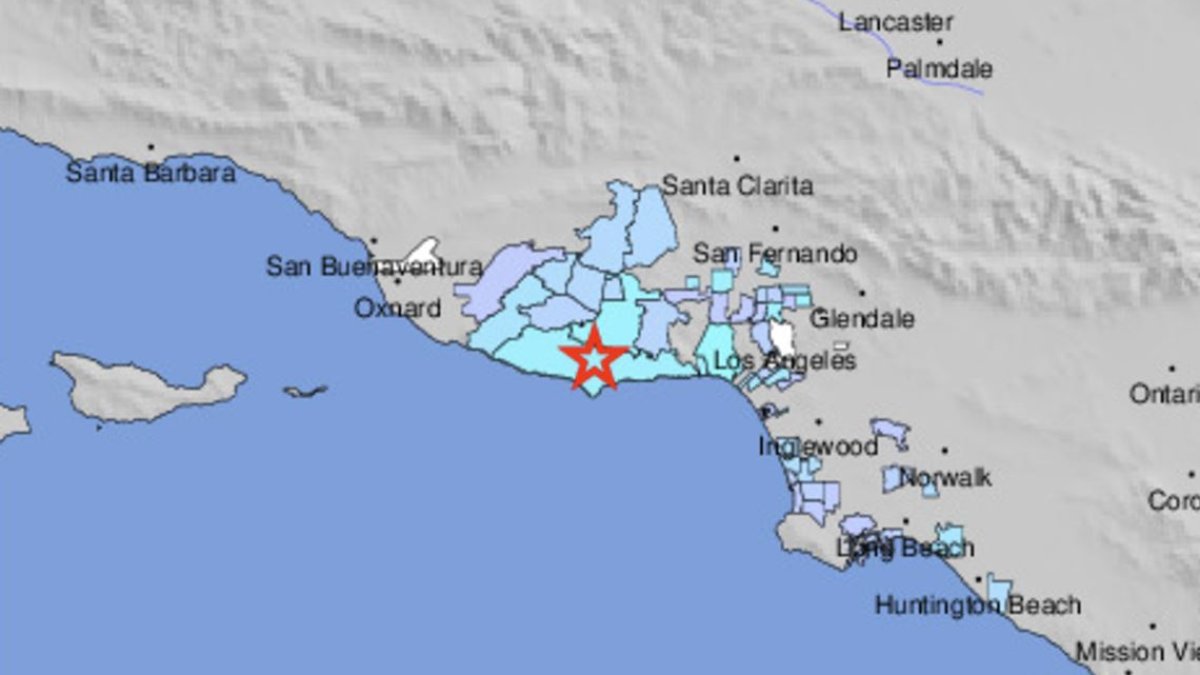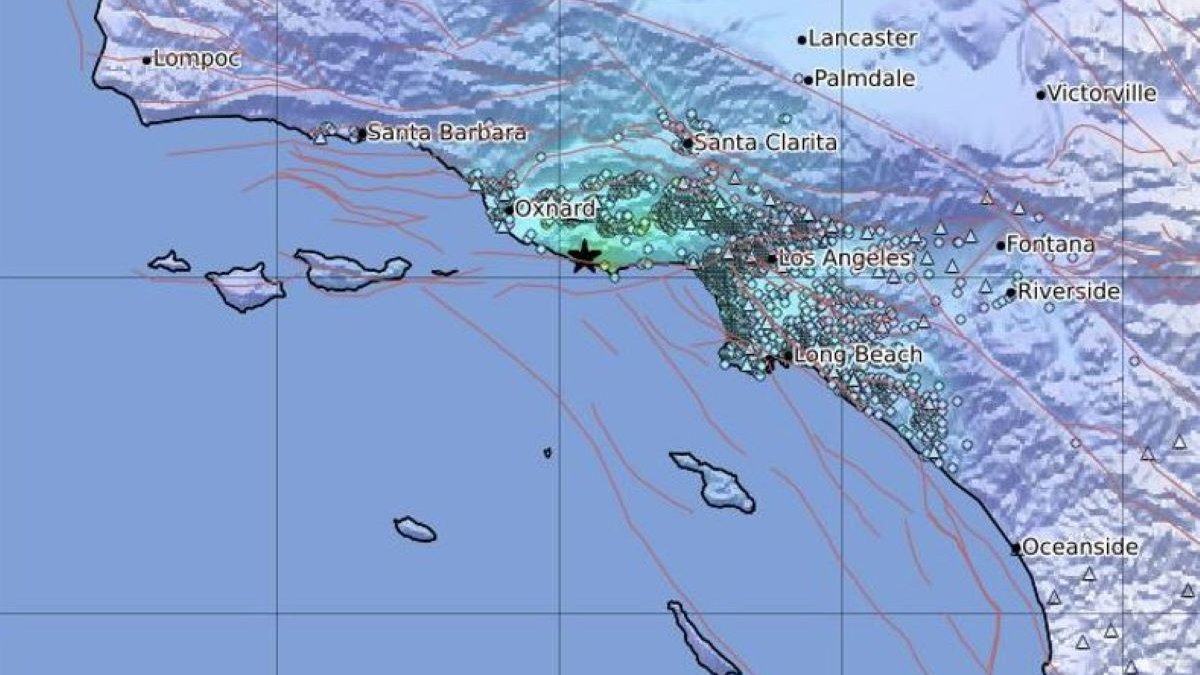L.A. Sees Rise In Moderate Earthquakes: Is Malibu Ground Zero?
Los Angeles, a city infamous for its iconic palm trees, sunny weather, and Hollywood glamour, has been experiencing a surge in moderate earthquakes in recent years. The city's unique geology, situated at the intersection of four tectonic plates, makes it prone to seismic activity. As the frequency and intensity of earthquakes increase, concerns about the region's preparedness and potential impact on the city's infrastructure and residents are growing.
The recent uptick in moderate earthquakes has sparked debate about whether Malibu, a coastal city in western Los Angeles County, is indeed "Ground Zero" for seismic activity. While Malibu's remote location and high-end residential areas may suggest a relatively low risk, the reality is more complex. In this article, we'll explore the science behind the rise in moderate earthquakes, the impact on the LA region, and what Malibu's residents and authorities should be aware of.
Understanding the Science Behind Moderate Earthquakes
Moderate earthquakes, defined as those with a magnitude between 3.0 and 5.0, are more common than previously thought. These earthquakes are often less destructive than their more powerful counterparts but can still cause significant damage to buildings, infrastructure, and the environment. The LA region is situated at the intersection of four tectonic plates: the Pacific Plate, the North American Plate, the Juan de Fuca Plate, and the Cocos Plate. This unique geology creates a complex network of faults, which can lead to an increased frequency of earthquakes.
Key Factors Contributing to Moderate Earthquakes
• Plate Tectonics: The movement of tectonic plates is the primary driver of earthquakes. As the Pacific Plate moves northwestward, it encounters the North American Plate, causing stress to build up in the Earth's crust.
• Fault Systems: The LA region has a complex network of faults, including the San Andreas Fault, the San Gabriel Fault, and the Hollywood Fault. These faults can act as conduits for seismic energy, leading to earthquakes.
• Soil Conditions: The LA region's soil is composed of a mix of clay, silt, and sand, which can affect the distribution of seismic energy and the likelihood of damage.
• Building Codes and Inspections: Building codes and inspection regulations play a critical role in mitigating the impact of earthquakes. Well-designed and well-maintained buildings can reduce the risk of damage and injury.
The Impact on the LA Region
The rise in moderate earthquakes has significant implications for the LA region, including:
Economic Impacts
• Damage to Infrastructure: Moderate earthquakes can cause significant damage to roads, bridges, and other infrastructure, leading to costly repairs and disruptions to daily life.
• Displacement and Housing Costs: Earthquakes can lead to displacement of residents, increased housing costs, and strain on the local economy.
• Business Interruptions: Moderate earthquakes can cause business closures, lost productivity, and economic losses.
Environmental Impacts
• Groundwater Contamination: Earthquakes can lead to groundwater contamination, posing a risk to local water sources and ecosystems.
• Soil Stabilization: Earthquakes can cause soil instability, leading to landslides and erosion.
• Wildlife Habitat Disruption: Earthquakes can disrupt wildlife habitats, affecting local ecosystems and biodiversity.
Malibu: Ground Zero or Not?
Malibu, with its picturesque coastline and affluent neighborhoods, may seem like an unlikely candidate for seismic activity. However, the region's unique geology and history of earthquakes suggest otherwise.
Malibu's Seismic History
• Early Earthquakes: Malibu has experienced a number of significant earthquakes throughout its history, including the 1872 Santa Monica earthquake and the 1933 Long Beach earthquake.
• Fault System: Malibu is situated near the San Gabriel Fault, which runs for over 200 miles through the San Gabriel Valley.
• Soil Conditions: Malibu's soil is composed of a mix of clay, silt, and sand, which can affect the distribution of seismic energy and the likelihood of damage.
Conclusion
The rise in moderate earthquakes in the LA region has significant implications for residents, businesses, and the environment. While Malibu may not be at the epicenter of seismic activity, its unique geology and history of earthquakes make it an area of concern. By understanding the science behind moderate earthquakes and taking steps to mitigate the impact, residents and authorities can work together to reduce the risk of damage and injury.
Recommendations for Residents and Authorities
• Create an Emergency Plan: Develop a comprehensive emergency plan that includes evacuation routes, communication protocols, and emergency supplies.
• Strengthen Buildings: Ensure that buildings are designed and constructed to withstand moderate earthquakes, with features such as seismic-resistant design, flexible foundations, and emergency shutdown systems.
• Monitor Earthquake Activity: Continuously monitor earthquake activity, using tools such as seismographs and earthquake detection systems, to stay informed and respond quickly to seismic events.
By working together and taking proactive steps, we can reduce the impact of moderate earthquakes in the LA region and build a safer, more resilient community for all.
Cinemas 2021
Zoechip
Karlanenio Crime Pos
Article Recommendations
- Nsfw Twitter
- Eylon Levy Wife
- Connieenio Case Pos
- Ihriuomotill Married
- Jesse L Martin Relationship
- Rita Coolidge
- Nicole Briscoe
- Jessica Tarlov Fired
- Gigi Perez Voice
- Phoebe Cates



